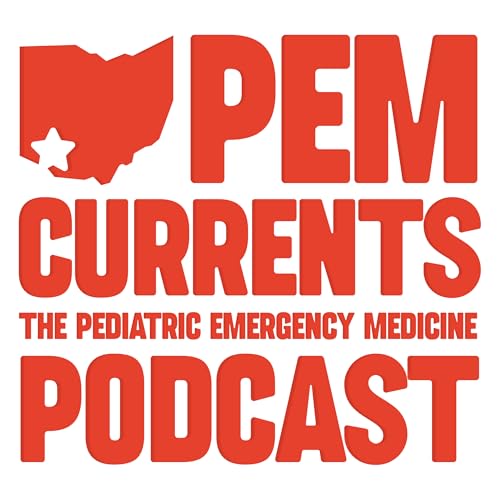Vaso-occlusive pain episodes are the most common reason children and adolescents with sickle cell disease present to the Emergency Department. Prompt, protocol-driven management is essential starting with early administration of IV opioids, reassessment at 15–30 minute intervals, and judicious hydration. Understanding the patient’s typical pain pattern, opioid history, and psychosocial context can guide more effective care. This episode walks through the pathophysiology, clinical presentation, pharmacologic strategy, discharge criteria, and complications to watch for helping you provide evidence-based, compassionate care that improves outcomes. Learning Objectives Describe the pathophysiology of vaso-occlusive crises in children and adolescents with sickle cell disease and how it relates to clinical symptoms.Differentiate uncomplicated vaso-occlusive crises from other acute complications of sickle cell disease such as acute chest syndrome, splenic sequestration, and stroke.Implement evidence-based strategies for early and effective pain management in vaso-occlusive crises, including appropriate use of opioid analgesia, reassessment intervals, and disposition criteria. Connect with Brad Sobolewski PEMBlog: PEMBlog.comBlue Sky: @bradsoboX (Twitter): @PEMTweetsInstagram: Brad SobolewskiMastodon: @bradsobo@med-mastodon.com References Kavanagh PL, Fasipe TA, Wun T. Sickle cell disease: a review. JAMA. 2022;328(1):57-68. doi:10.1001/jama.2022.10233Yates AM, Aygun B, Nuss R, Rogers ZR. Health supervision for children and adolescents with sickle cell disease: clinical report. Pediatrics. 2024;154(2):e2024066842. doi:10.1542/peds.2024-066842Bender MA, Carlberg K. Sickle Cell Disease. In: Adam MP, Everman DB, Mirzaa GM, et al, eds. GeneReviews®. University of Washington, Seattle; 1993–2024. Updated February 13, 2025. Available from: https://www.ncbi.nlm.nih.gov/books/NBK1377/Brandow AM, Carroll CP, Creary S, et al. American Society of Hematology 2020 guidelines for sickle cell disease: management of acute and chronic pain. Blood Adv. 2020;4(12):2656-2701. doi:10.1182/bloodadvances.2020001851Brandow AM, Carroll CP, Creary SE. Acute vaso-occlusive pain management in sickle cell disease. In: Hoffman R, Benz EJ, Silberstein LE, Heslop HE, Weitz JI, Anastasi J, eds. UpToDate. UpToDate; 2024. Accessed July 2025. https://www.uptodate.comGlassberg JA, Strouse JJ. Evaluation of acute pain in sickle cell disease. In: Hoffman R, Benz EJ, Silberstein LE, Heslop HE, Weitz JI, Anastasi J, eds. UpToDate. UpToDate; 2024. Accessed July 2025. https://www.uptodate.comDeBaun MR, Quinn CT. Overview of the clinical manifestations of sickle cell disease. In: Hoffman R, Benz EJ, Silberstein LE, Heslop HE, Weitz JI, Anastasi J, eds. UpToDate. UpToDate; 2024. Accessed July 2025. https://www.uptodate.comMcCavit TL. Overview of preventive outpatient care in sickle cell disease. In: Hoffman R, Benz EJ, Silberstein LE, Heslop HE, Weitz JI, Anastasi J, eds. UpToDate. UpToDate; 2024. Accessed July 2025. https://www.uptodate.com Transcript Note: This transcript was partially completed with the use of the Descript AI and the Chat GPT 4o AI Welcome to PEM Currents: The Pediatric Emergency Medicine Podcast. I’m your host, Brad Sobolewski. In this episode, we’re digging into a common but complex emergency department challenge: pain management for vaso-occlusive crises in children and adolescents with sickle cell disease. These episodes are painful—literally and figuratively. But with thoughtful, evidence-based care, we can make a big difference for our patients. Overview and Epidemiology Vaso-occlusive crises, or VOCs, are the most frequent cause of emergency visits and hospitalizations for individuals with sickle cell disease (SCD). They are responsible for more than 70 percent of ED visits among children with SCD and account for substantial healthcare utilization and missed school days. Most children with homozygous HbSS will experience their first painful episode before the age of 6. Recurrent VOCs are associated with higher risks of chronic pain, opioid use, and diminished quality of life. Why Do VOCs Happen? Sickle cell disease is caused by a point mutation in the beta-globin gene, leading to hemoglobin S. Under stress—such as infection, dehydration, or even cold exposure—red blood cells polymerize, sickle, and become rigid. These sickled cells obstruct capillaries and small vessels, leading to local tissue ischemia, inflammation, and pain. It’s not just about the blockage—the inflammatory cascade, endothelial damage, and cytokine release all contribute to the pain experience. What Does the Pain Feel Like? Ask kids and teens with sickle cell disease, and they’ll describe their pain as deep, throbbing, stabbing, or aching. It often feels bone-deep and can be relentless and exhausting. Many say it’s unlike any other pain—they may compare it to being “hit with a bat,” “bone being crushed,” or “...
Exibir mais
Exibir menos
 Nov 17 20259 minutos
Nov 17 20259 minutos Oct 22 202515 minutos
Oct 22 202515 minutos Sep 24 202510 minutos
Sep 24 202510 minutos Sep 4 202513 minutos
Sep 4 202513 minutos 11 minutos
11 minutos Jun 25 202510 minutos
Jun 25 202510 minutos 30 minutos
30 minutos Apr 30 202512 minutos
Apr 30 202512 minutos

